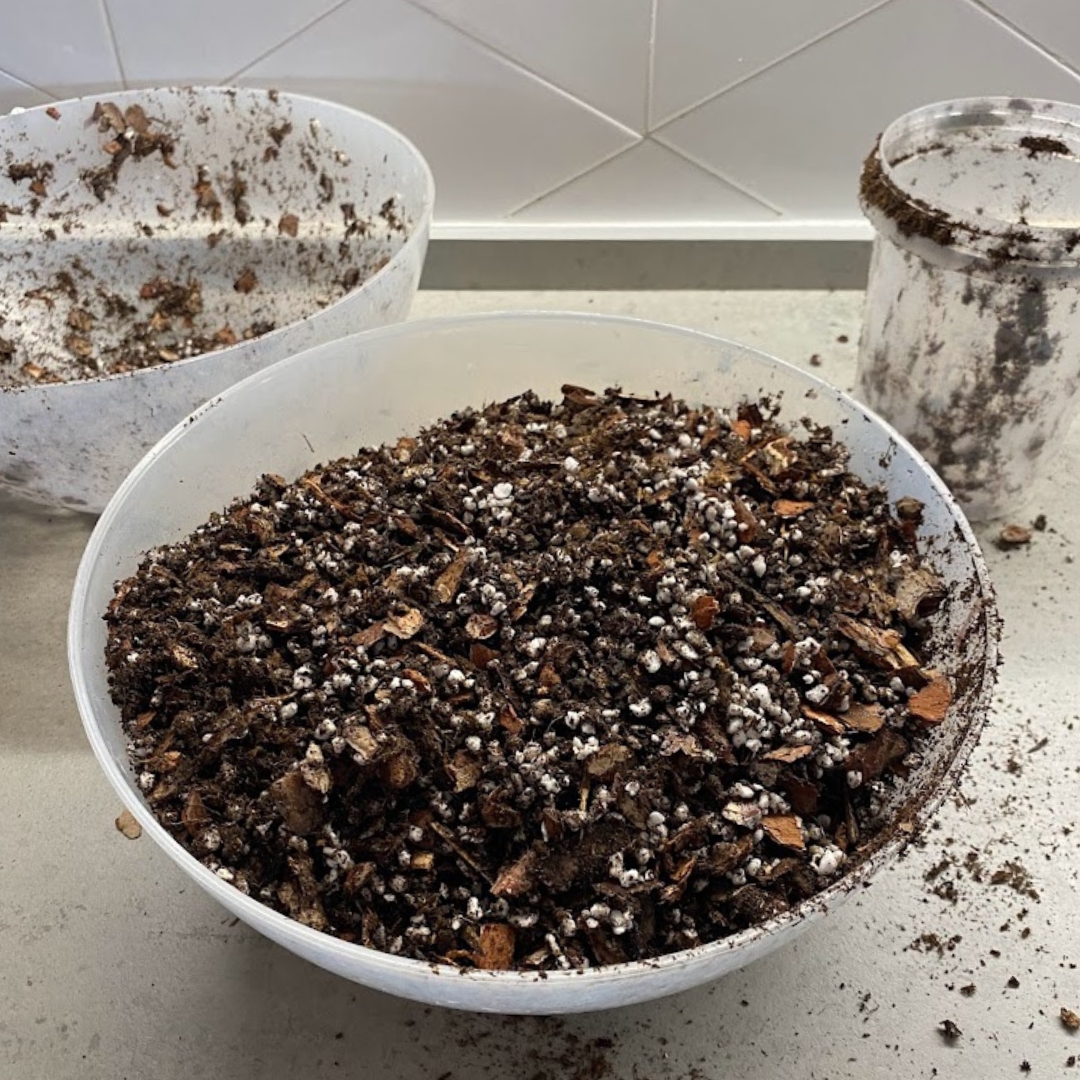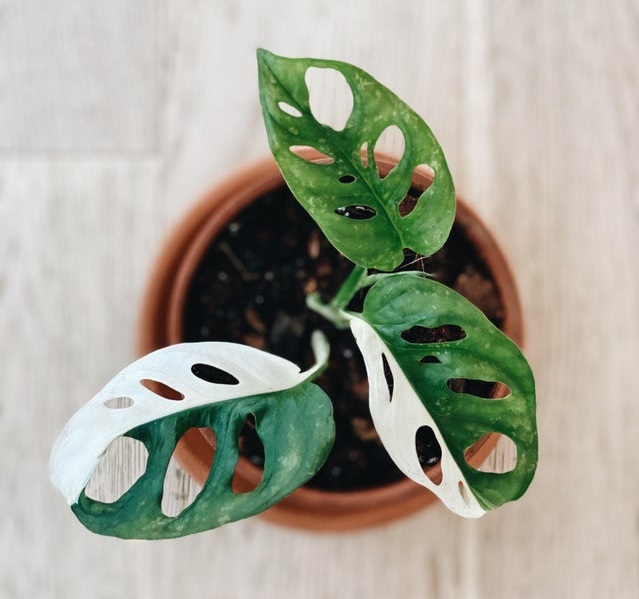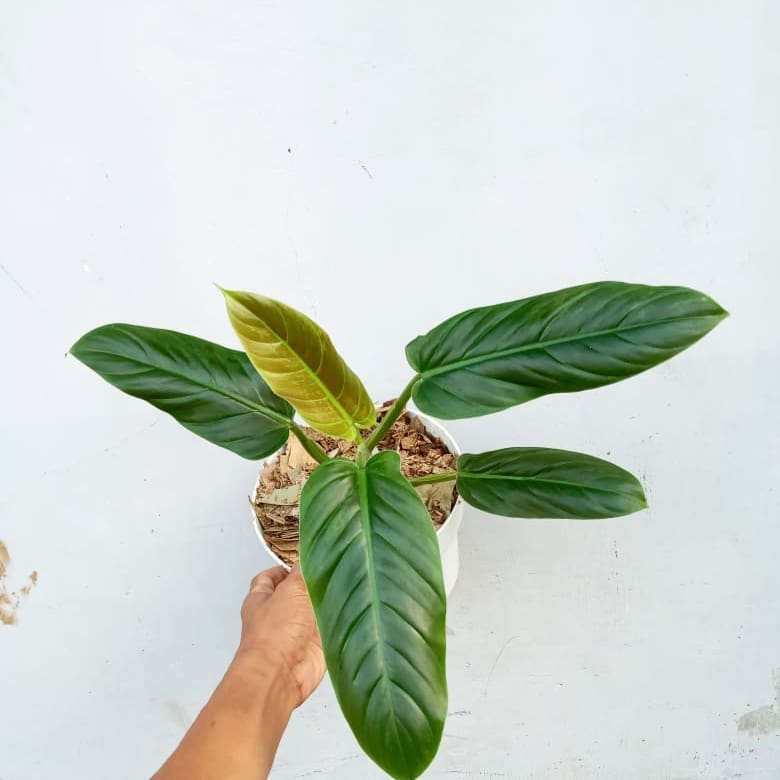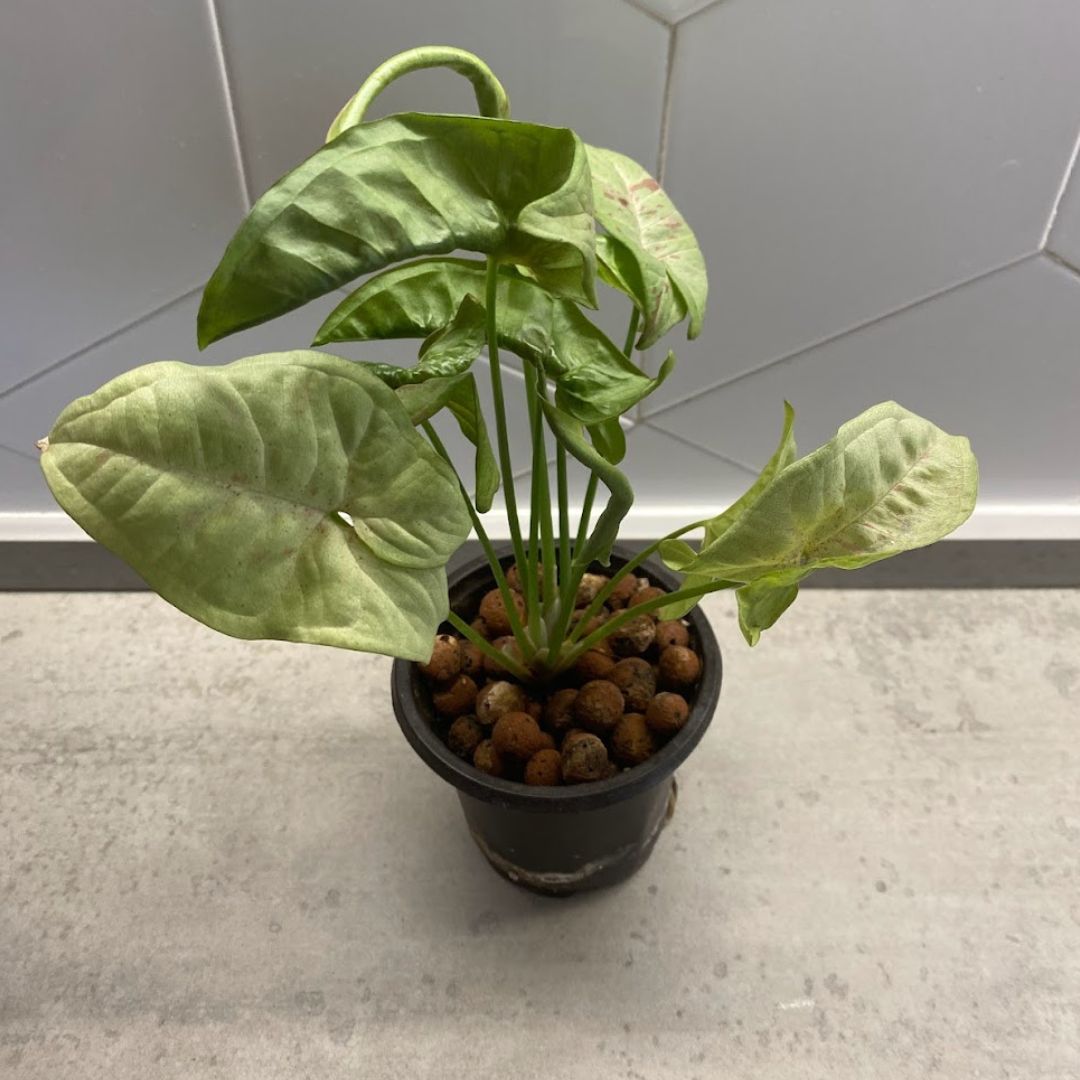
Syngonium Milk Confetti – Care And Propagation Guide
Welcome to our guide to Syngonium Milk Confetti care and propagation guide with pictures of my plants and step by step instructions.
Syngonium Milk Confetti Care Summary
| Light needs: | Bright indirect sunlight |
| Watering needs: | Check it weekly and only water if the top 60% of soil is dry |
| Fertilizer: | Feed a balanced feed every 3 or 4 week in the summer. |
| Soil: | A well draining mix with plenty of perlite. |
| Humidity: | 50-60% |
| Temperature: | 15-30°C (59-86°F) during the day, above 10°C (50°F) at night. |
| Where to buy: | Try our list of Rare Plant Shops or Etsy. |
| Other names: | Syngonium Podophyllum Milk Confetti. |
| Common issues: | Fungus gnats, over watering |
Introduction
The syngonium milk confetti is a really beautiful plant with it’s speckled milky leaves. I have a few of them and they look stunning. They grow fairly slowly for syngoniums, but still fairly fast compared to a succulent for example, the main thing about them is their pretty pale, pastel leaves.
Tip: we recommend Etsy for buying plants. Look for the best rated seller you can, and try to buy as close to your home as possible so the plant does not travel too far.
A note about affiliate links: when you buy a plant, pots, soil, or other goods through links on this article we sometimes earn a commission. It doesn’t cost you anything, but it really helps us out if you do use them. Thanks a lot! An example of this is if you buy a plant on Etsy using this link. Read our privacy policy for more information. Thanks again.
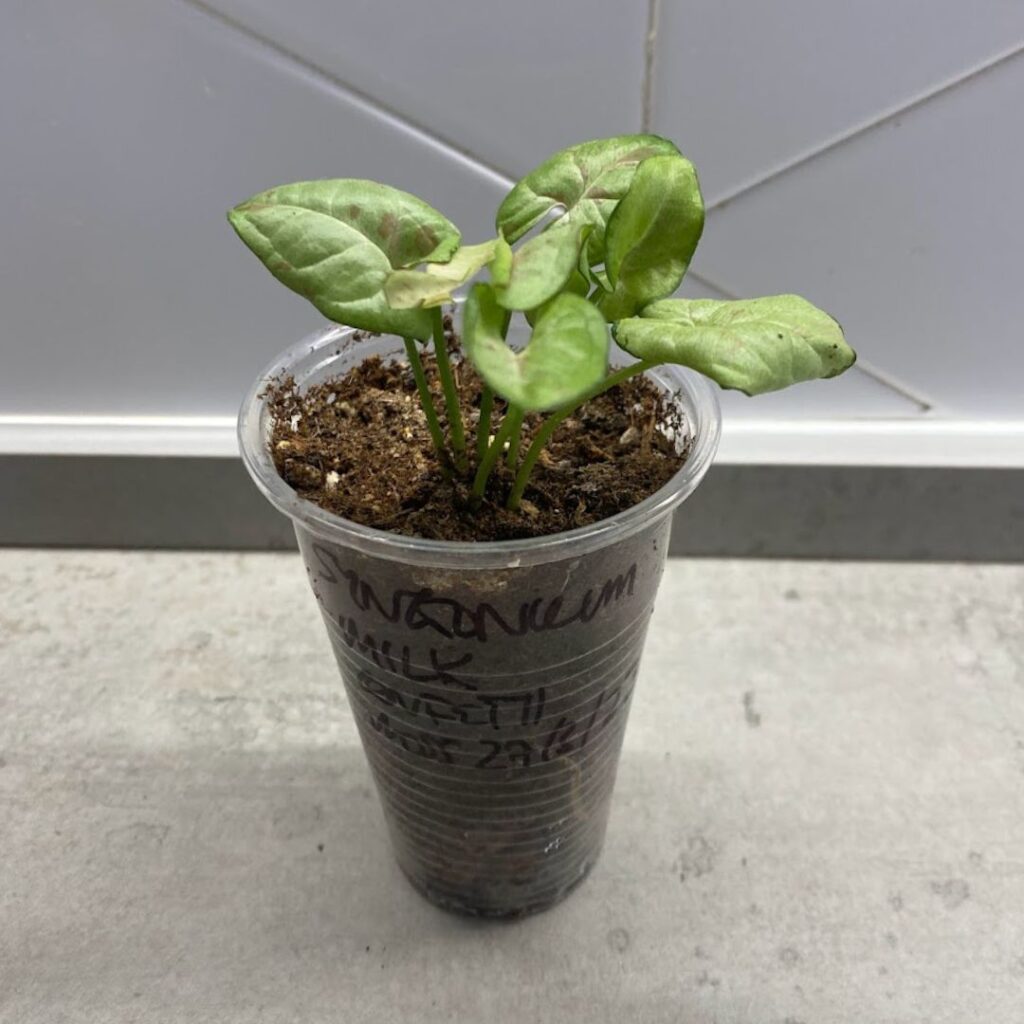
Syngonium Milk Confetti Light Requirements
Give them bright but indirect sunlight, no direct sun. They get a bit dull in lower light areas, but will be fine in medium indirect sunlight. I keep mine in bright but indirect light to the side of a south facing window, so it doesn’t get hit by direct sun but is still really bright.
See also: Syngonium Albo Care, Types Of Syngonium Plants, Pink Syngonium, Best Soil For Syngonium Plants, How To Propagate Syngonium Albo, Syngonium Mojito Care, Reverted Syngonium Mojito.
How Often To Water
You want to let the soil mostly dry out before watering again, test it with your finger, it should be about 60% dry. Make sure that the plant is not sat in the water that drains off, tip it out from the bottom pot after watering. Check it each week buy don’t water if it isn’t dry enough.
At watering time, it’s a good idea to keep an eye out for pests like Fungus Gnats.
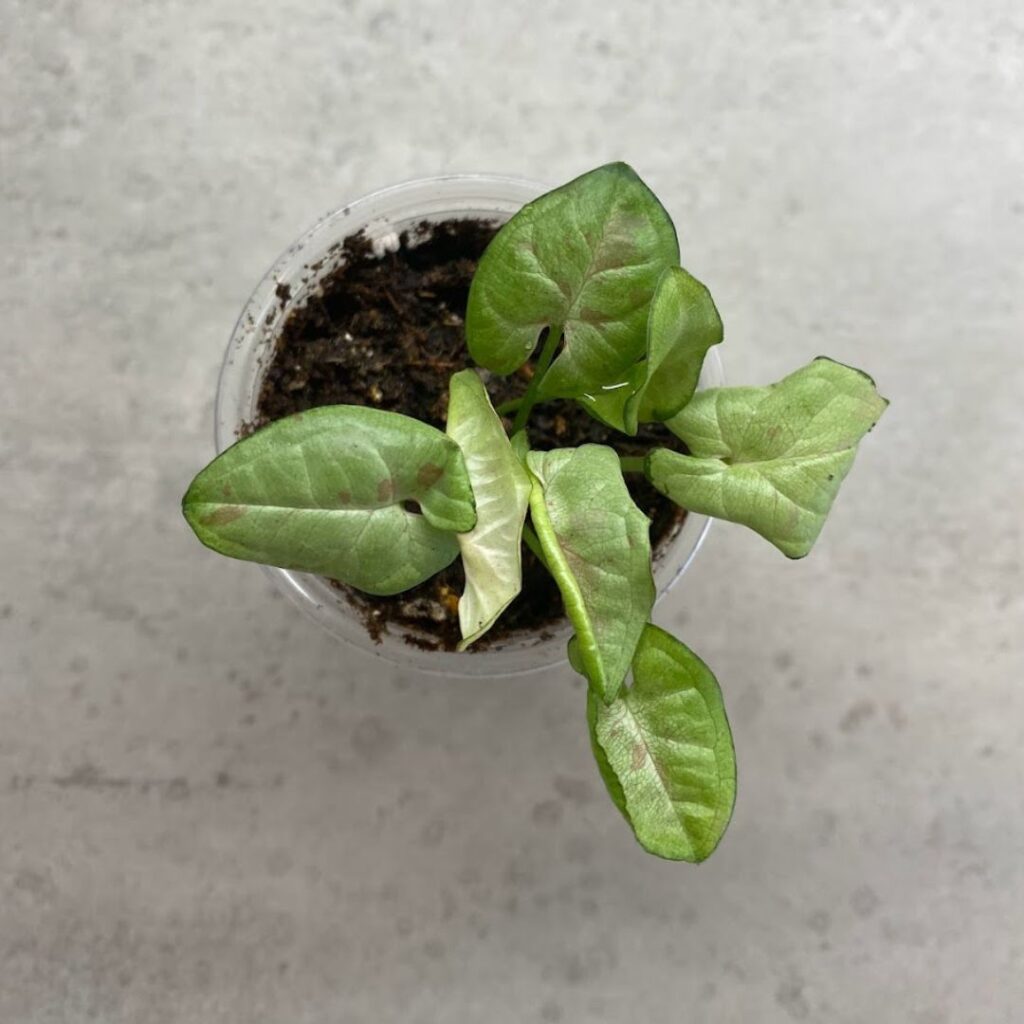
Fertilizer
I don’t feed mine, they don’t need it, but they will grow quicker if you give them some fertilizer. You can give them a well diluted balanced feed every 3 o 4 weeks in the spring and summer and you should see better growth.
Soil
If you’re looking for a quick and easy well draining soil, just add some perlite to normal potting compost.
A good soil for syngoniums is a mix of orchid bark, perlite, potting mix (Amazon affiliate links that help this blog). You can find some good pre-mixed syngonium soil on Etsy too.
Tip: for more on making your own syngonium soil see our guide here.
When to Repot Syngonium Milk Confetti
They can grow large root systems, so repot them once a year so the roots have space. It will encourage the whole plant to grow quicker too.
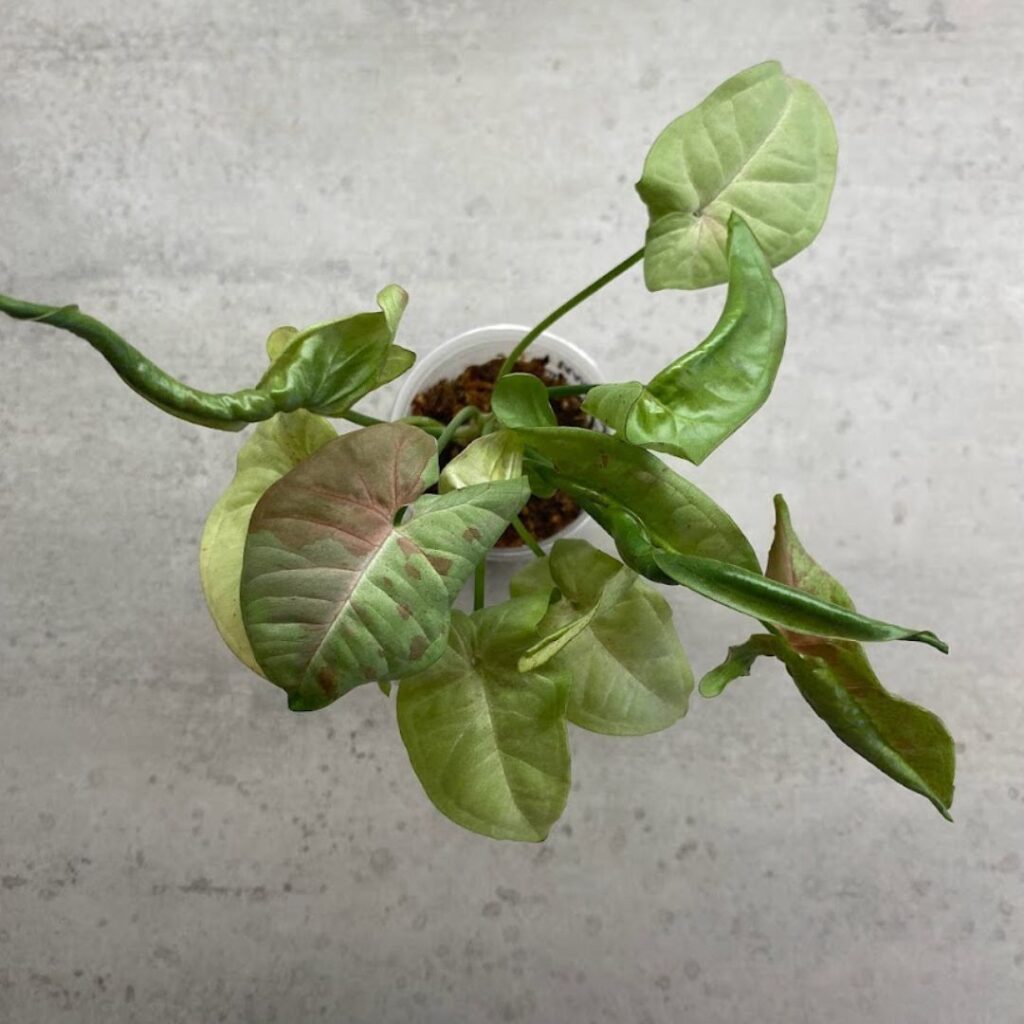
For more on different types of syngonium see our syngonium category with all our care guides.
Humidity
Normal household humidity is fine for syngoniums, 50-60% is ideal to get the best out of them. They are fairly tough plants but the leaves can go crispy in lower humidity levels.
Temperature
Aim for 15-30°C (59-86°F) during the day. They’ll be fine in most homes. And try to keep them above 10°C (50°F) at night. Avoid cold drafts in the winter too.
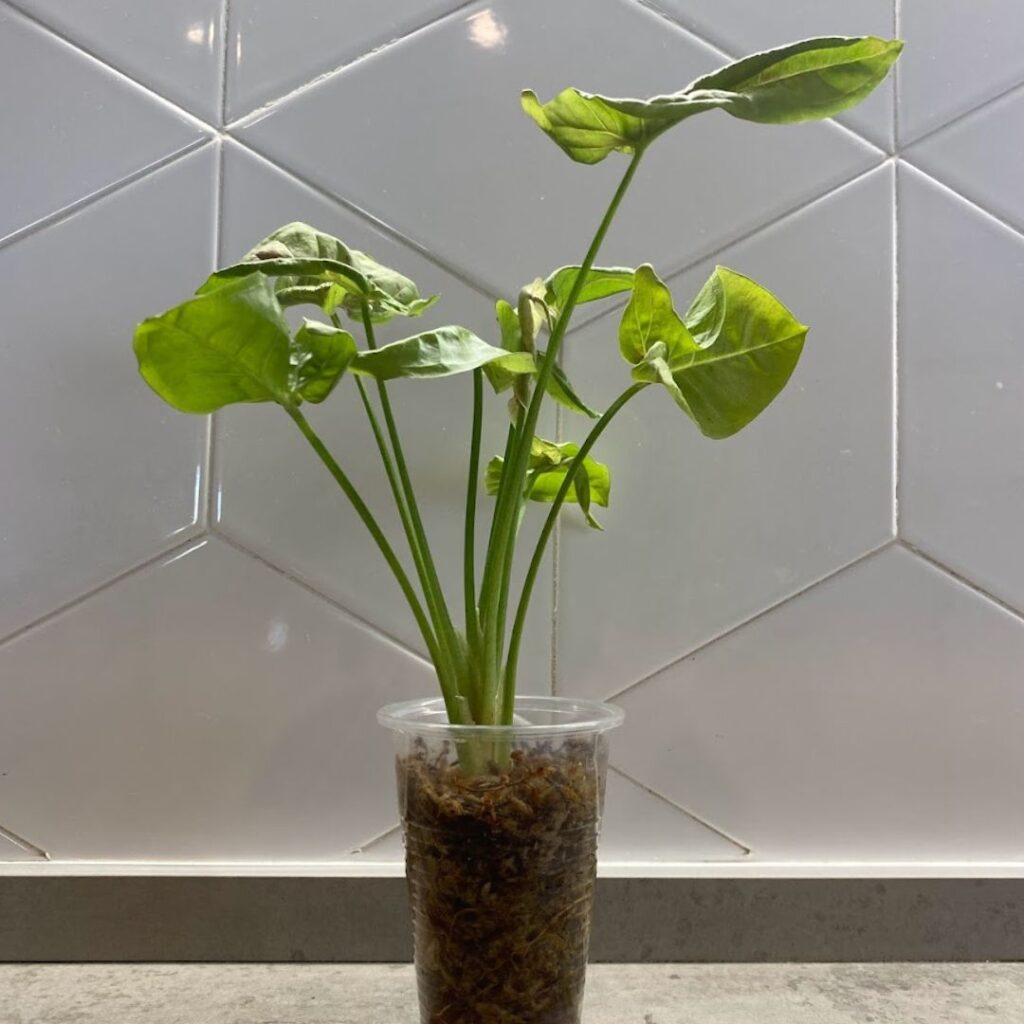
How To Propagate Syngonium Milk Confetti
I have propagated lots of syngonium milk confetti plants for sale in my shop. I’ve used sphagnum moss and soil to grow them out. I would recommend water propagating them first, then moving them to soil. The thing you have to be careful about is that the nodes are really close together, so use a sharp knife and be very careful as you make the cut and try not to damage the nodes as the new cutting will need to root from there.
Follow these steps to propagate your Syngonium Milk Confetti:
Decide Where You’ll Cut The Plant
Make sure you have a plant that is big enough to take a cutting from. You want to think about how the plant will look after you take the cuttings, as well as how the cutting will look. The cutting will need at least one node and a leaf, two leaves is good too.
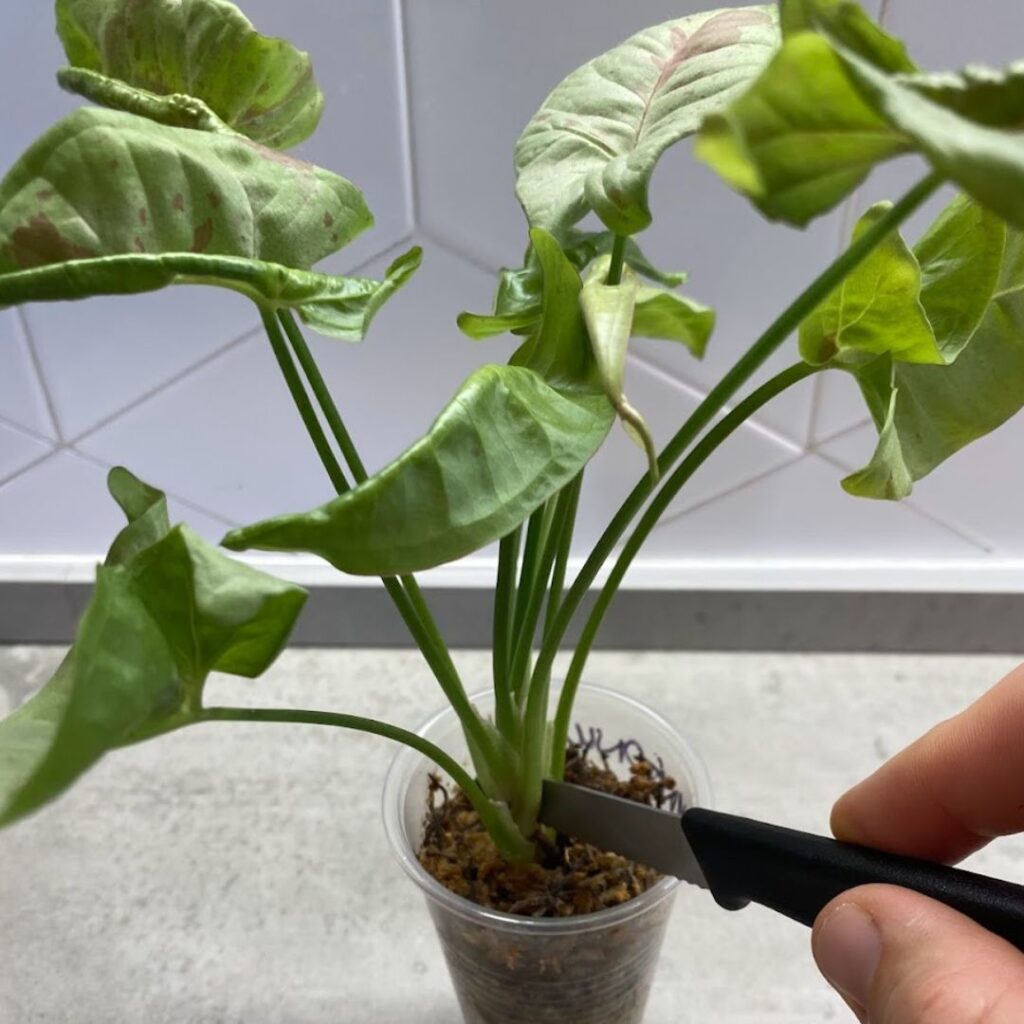
Make The Cut
Take a clean, sharp knife and cut between the nodes. Try your best not to damage the nodes and get a clean cut. There could be a lot of nodes close to each other, you need at least one node on your cutting as the roots grow from it.
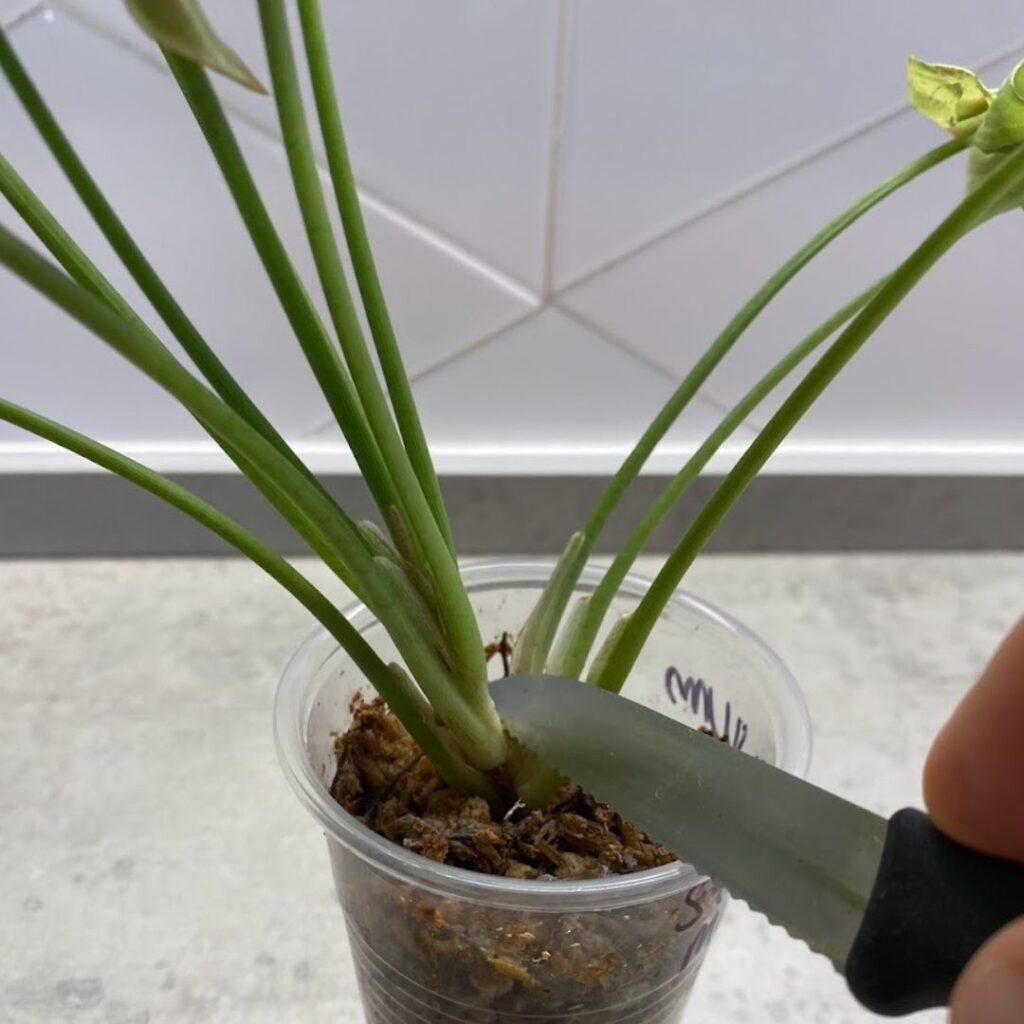
Set The Cutting Aside So The Wound Heals Over
You want the cut site to be scabbed over so that water cannot get into the wound as the cutting can rot more easily if water gets into the wound. Leaving it aside for 2 or 3 hours should be enough.
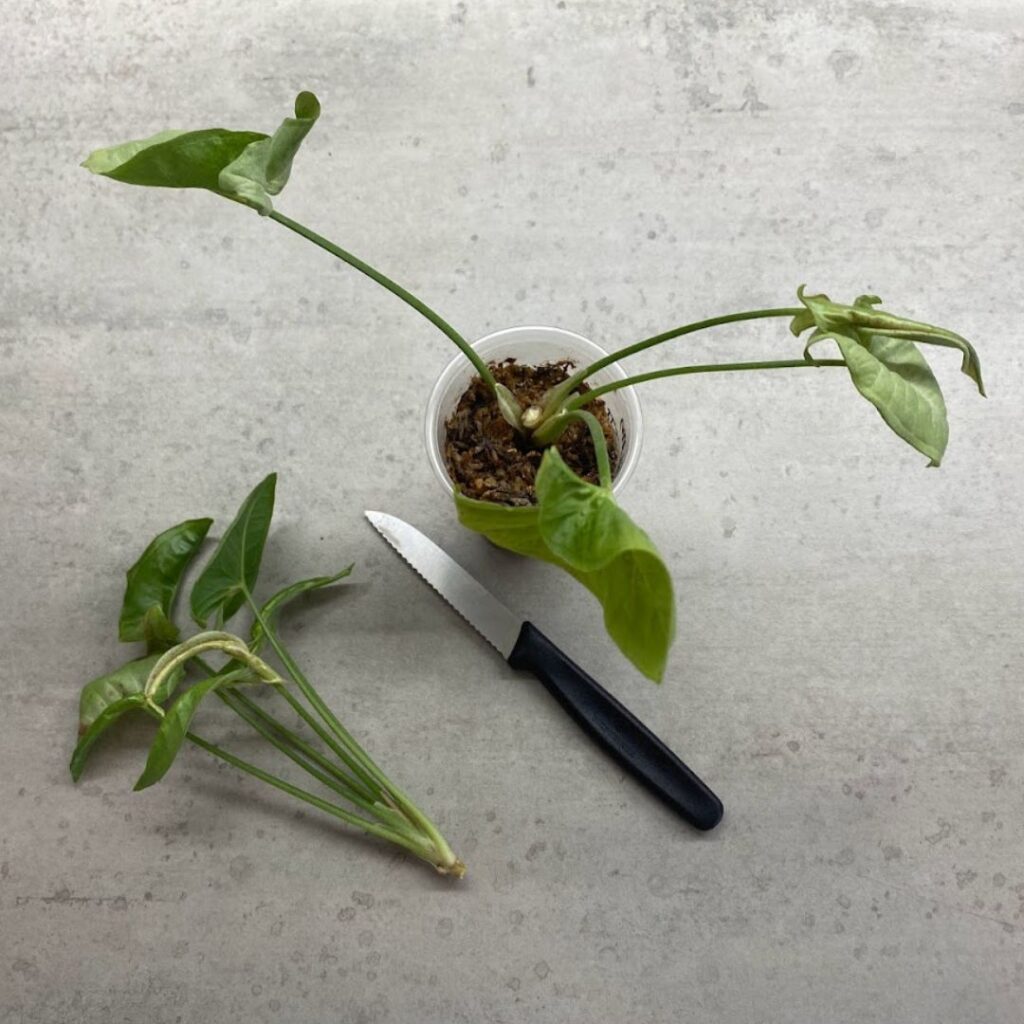
Put The Cuttings In a Jar Of Water
Keep the leaves out of the water and the nodes under. The leaves can sometimes rot in the water so try to keep them out.
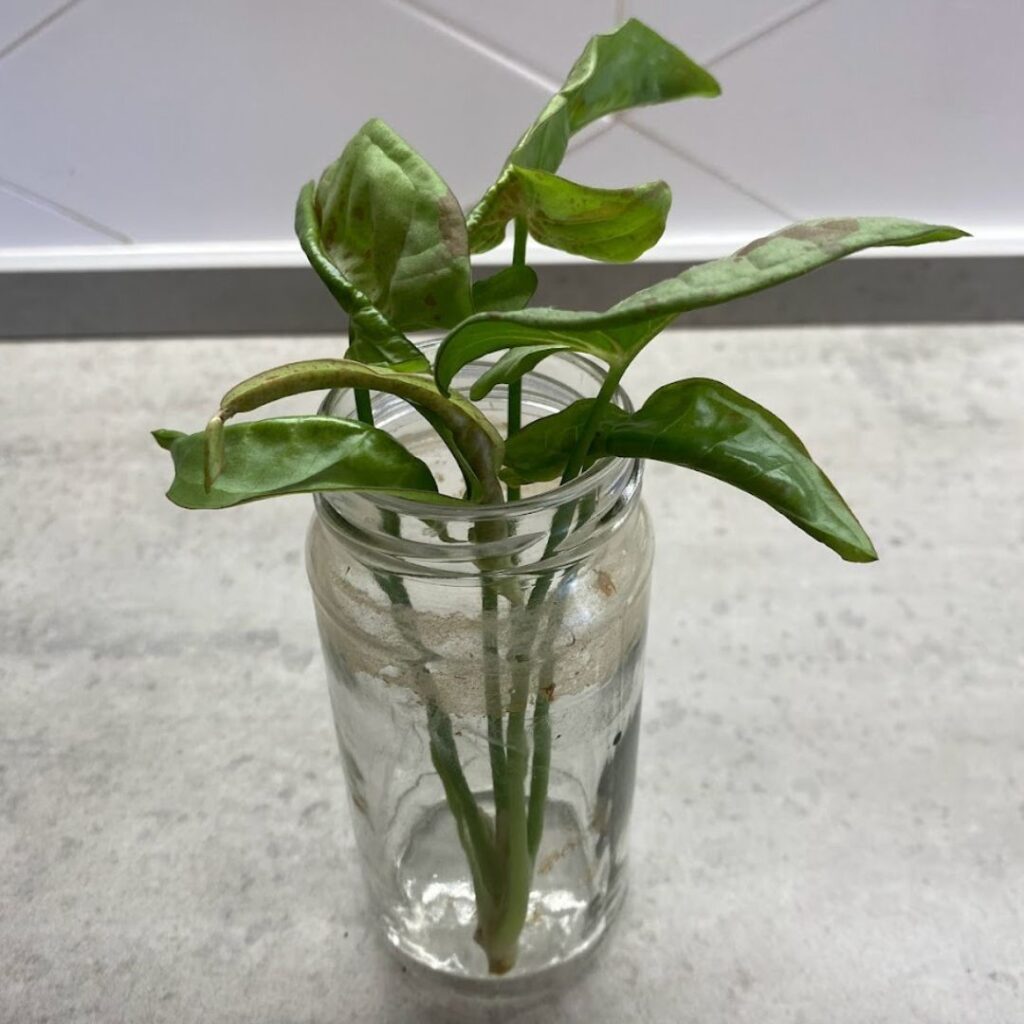
Keep The Water Topped Up And Give The Cutting Indirect Sunlight
Put the jar in indirect sunlight to encourage rooting and keep the water topped up. Remove any cuttings that rot, and change the water if it goes cloudy.
Move It To Soil Once It Is Well Rooted
After a month or two when it has a big and well developed root system you can move it to soil. Keep it humid (use a clear plastic bag with a couple of holes in it over the plant) until it has taken to the soil, you’ll know when it has worked as the plant will produce new leaf growth from the top.
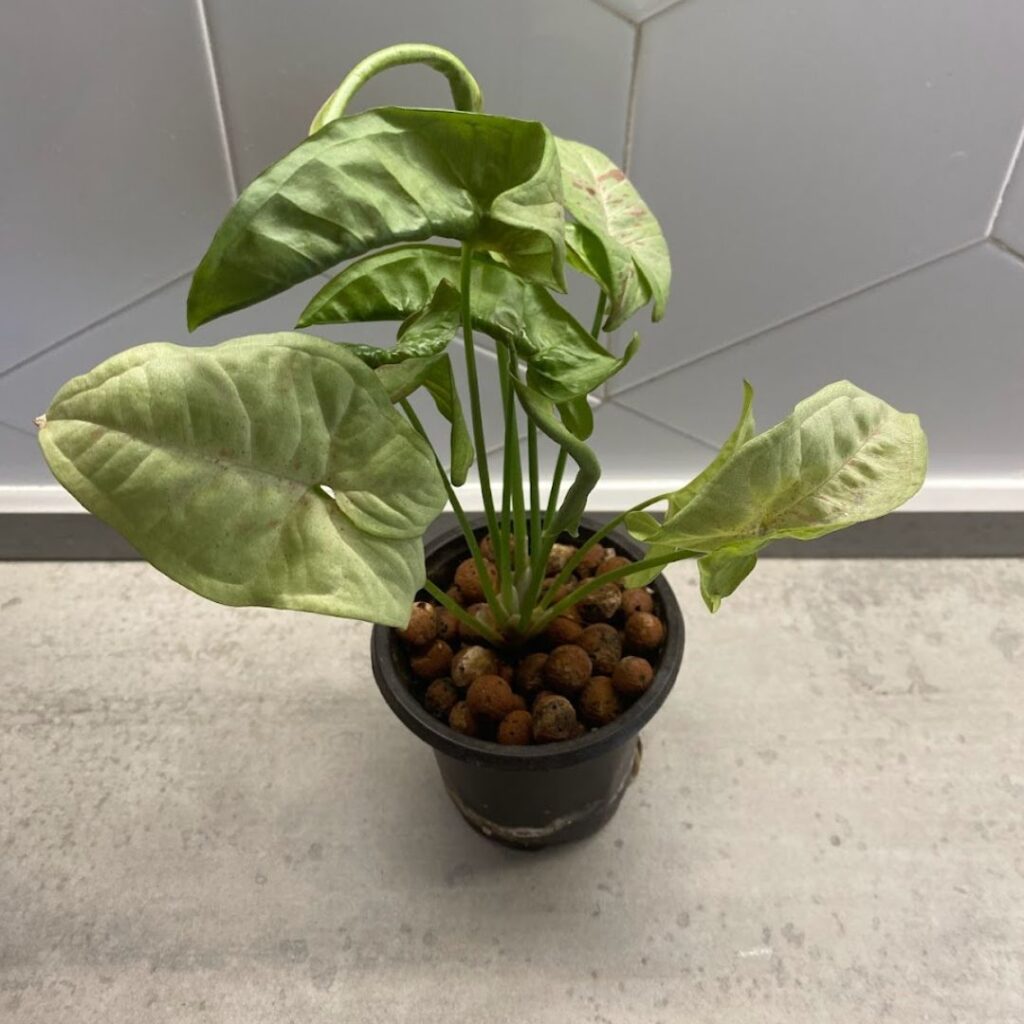
USDA Zone
They can grow outdoors in USDA zones 10-11.
Is It Toxic To Cats?
They are toxic to pets if eaten and can cause oral irritation and vomiting. Your pet should be ok in a day or so, but seek vets advice in any case.
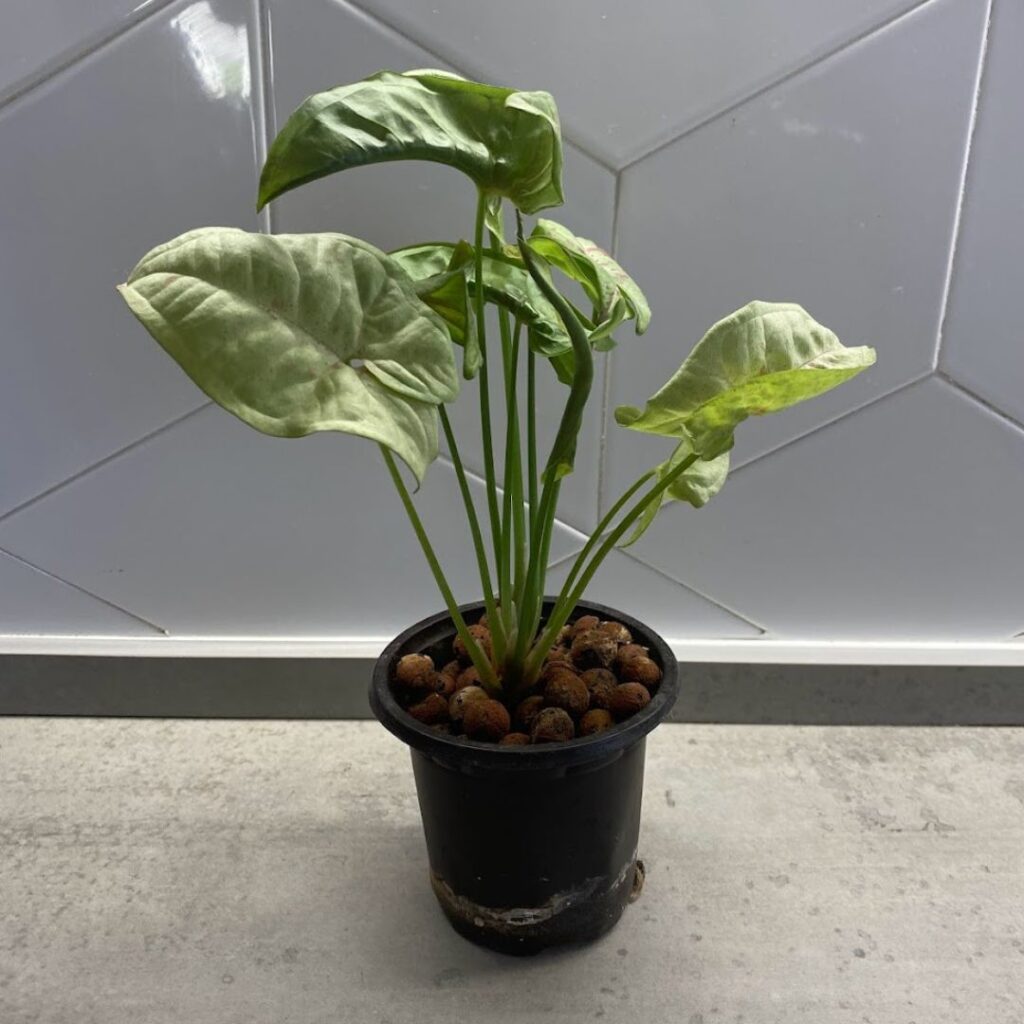
Other Names
Syngonium Podophyllum Milk Confetti.
Where To Buy
Try our list of Rare Plant Shops. Or Try Etsy…
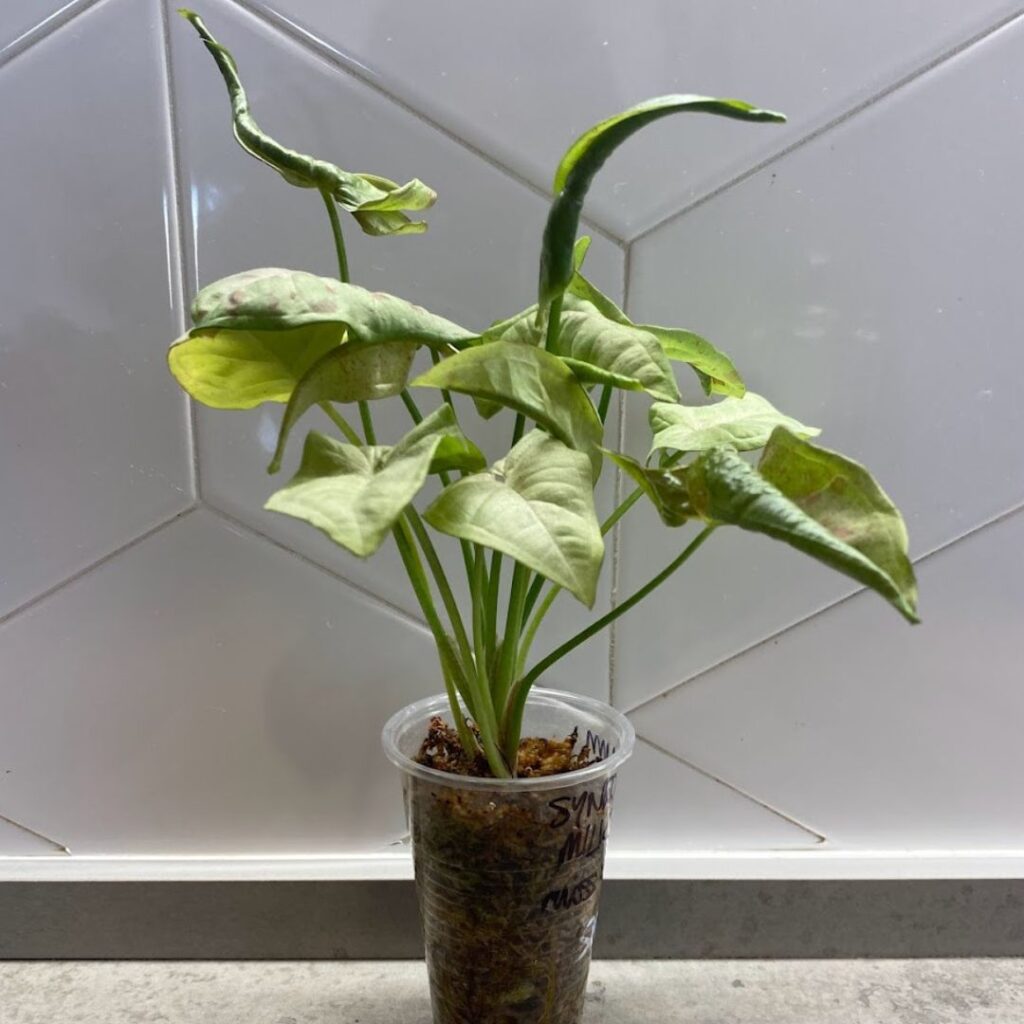
Reverted Syngonium
Some syngoniums can loose their variegation, I covered this in this guide: Reverted Syngonium Mojito. Luckily the milk confetti does not revert easily. They can go duller if they don’t get enough light.
Syngonium Milk Confetti Price
At the time of writing, they go for about 10-20 euros in Europe and about 20-30 USD in North America.
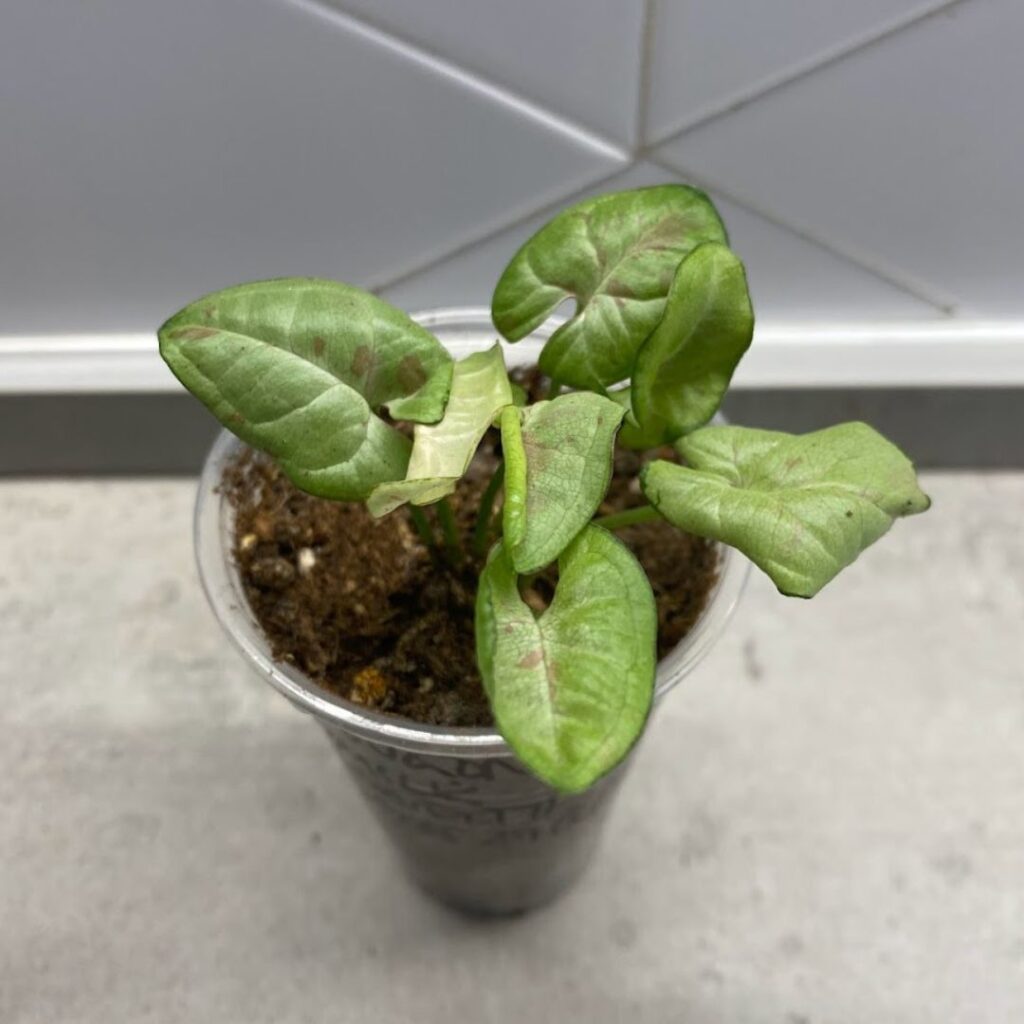
Syngonium Milk Confetti Frequently Asked Questions
Syngonium Milk Confetti Vs Pink Spot
The pink spot has pinker leaves with pink spots on them, the milk confetti has pale green leaves with pink spots on it.
Syngonium Milk Confetti Vs Confetti
You can tell the difference by looking at the petioles. The milk confetti has white sheaths on the petiole with pink speckles on it.
Syngonium Milk Confetti Vs Pink Confetti
I think the ‘pink confetti’ is another name for the pink spot, which is like the milk confetti, but the pink spot has pale pink leaves (not pale green) with pink spots on.
Syngonium Milk Confetti Petiole
The petiole on young plants can be green, or green with speckles as it gets older. They have speckled sheaths even on young plants.
Syngonium Milk Confetti For Sale
If you’re in Europe, I sometimes sell these in my store here.
Other Articles You Might Like
There you have it, here ends our guide to this beautiful plant. You might also like our other articles:
Pink Syngonium, Best Soil For Syngonium Plants, How To Propagate Syngonium Albo (Easy Propagation Guide), Syngonium Mojito Care, Reverted Syngonium Mojito.
Please follow us on Instagram and Pinterest for regular plant updates and occasional plant giveaways.
